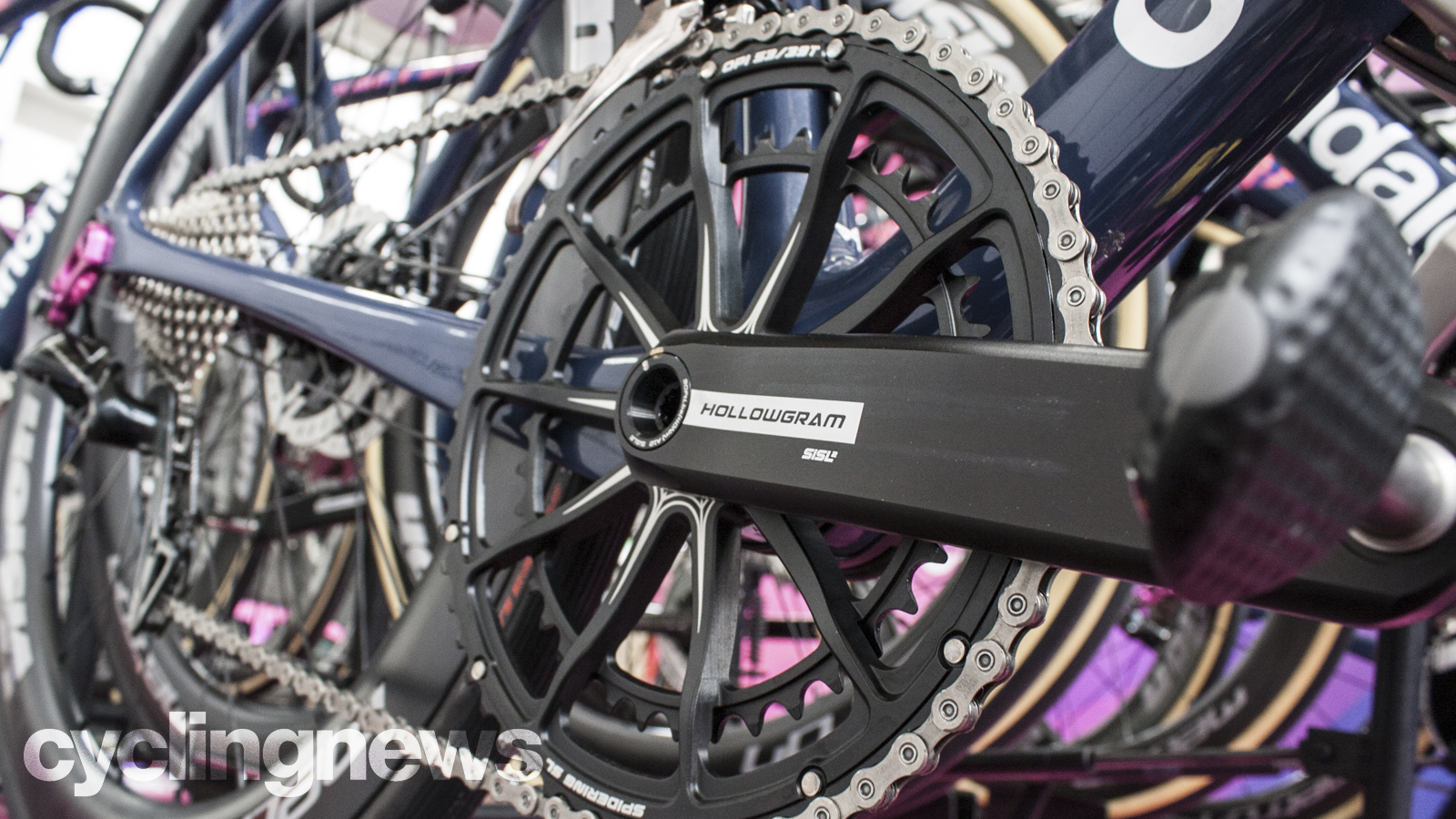The great chainring debate: oval or round?
Oval chainrings can protect your knees and balance your pedal stroke. But are they worth the price?

For decades the chainring was a simple component that transferred crank force to your drivetrain. But as racing and the quest for minor performance gains in cycling never end, a small group of engineers started reconsidering chainring shape.
During the last decade, an alternative chainring silhouette has become popular: the oval. From a distance, oval and round chainrings look nearly the same. But if you step closer and view two bikes with each, the difference in the profile is clear.
What is the purpose of oval chainrings and are they a natural evolution to gaining better performance and mitigating against injury?
In any machine-driven system with gears, round rings work terrifically well. The logic is simple: with completely predictable and even power output into the system, a round shape is most efficient. For a rider powering the cranks, that is never the case.
The body’s physiology does not apply power to the cranks in a perfectly linear or consistent manner. In any crank rotation, there are weak spots. For professional cyclists, with their perfected pedal strokes, those weak spots are marginal. But amateur riders have a broader spread of pedal stroke weakness.
A round chainring will theoretically exacerbate weak spots in your pedal stroke and the development of oval chainrings are tabled as a solution.
Why oval could be better for you
The unique technical feature differentiating oval chainrings from round options is their namesake shape. Oval chainring theory supposed that your pedal stroke is at its weakest point with the pedals at a 12-to-6 position, placing one leg at full extension and the other in peak contraction.
The latest race content, interviews, features, reviews and expert buying guides, direct to your inbox!
Oval chainrings are engineered to lessen these 12-to-6 vertical plane dead spots in your pedal stroke. This is achieved by shaping the traditional round profile chainring into an ovalised shape, which gives you a gentler transition of the front ring’s teeth to a chain’s links when rotating through the 12-to-6 position.
What are the tangible benefits of the oval chairing? The theory of reducing 12-to-6 pedal stroke inefficiency and strain have not produced notable increases in power output, but you might benefit from endurance gains on a long ride, especially one with many climbs.
Advocates of the oval chainring say that its appeal is the reduction of riding fatigue on those big days in the saddle. A longer-term view is that knee health might be improved with an oval chainring, especially for riders who are keen climbers.
Good for gravel
Gravel bikers could source an advantage that is unique to the looser terrain they ride. With the oval chainring balancing your power output, especially at higher cadence in lower gears, there should be a marginal traction advantage on a gravel road climb.
Torque-induced rear-wheel slippage can put a lot of stress on the knees when you are climbing on a steep and badly rutted gravel road. With an oval chainring, you are marginally less likely to spin that rear wheel and more likely to tempo an even torque output through the cranks.
What are the risks with oval chainrings? Chain drop was initially the issue, but advances in rear derailleur design, and narrow-wide 1x chainrings have largely solved the problem. Road bike drivetrains have gained from the clutch derailleur systems developed for mountain biking, where a combination of increased chain tension and alternative tooth profile front rings keep the chain securely in place.
If you are on a budget and seeking an easily quantifiable power output gain, the ovalised chainring is not going to justify its price over a traditional round shape. For those riders who are prone to knee injuries, or do a lot of severe gradient climbing, it could worth the investment. It is worth remembering that the outlay for an oval must also include the presence of a clutch derailleur system, to avoid chain drop annoyance.
Lance Branquinho is a Namibian born media professional, with 15-years of experience in technology and engineering journalism covering anything with wheels. Being from Namibia, he knows a good gravel road when he sees one, and he has raced some of Africa’s best-known mountain bike stage races, such as Wines2Wales and Berg&Bush.
